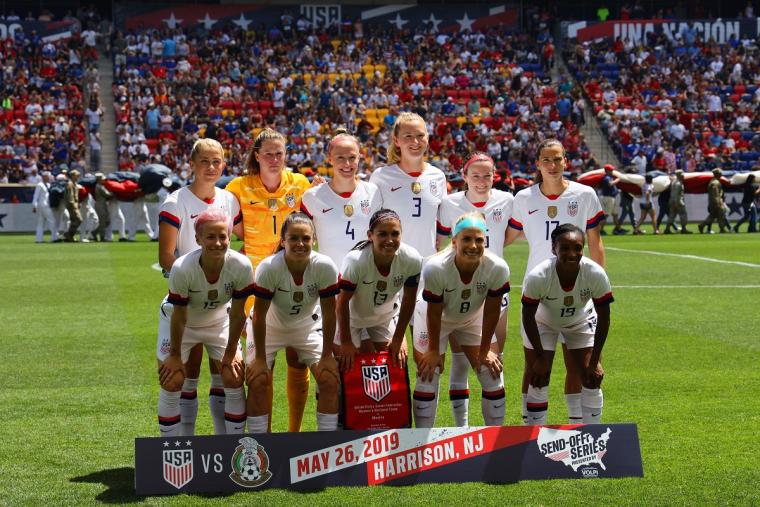
The final countdown is on for 2023 FIFA Women’s World Cup, which begins its month-long run July 20. Team USA is looking for a three-peat, while 31 other teams will try to unseat the reigning champions. This year’s event, hosted jointly by Australia and New Zealand, has expanded from 24 teams at past World Cups and now replicates the 32-team format of the World Cup for men. It also marks the first time more than one country is hosting the Women’s World Cup, as well as the first time the tournament has taken place in the Southern Hemisphere.
All told, 64 matches will be played at 10 stadiums in nine cities, with the championship game slated for 83,500-seat Stadium Australia in Sydney on Aug. 20. Sports Illustrated tallied up which countries will travel the most air miles during group-stage play, with Ireland likely being the most jetlagged (4,762), followed by Denmark (4,082), Jamaica (3,772), Canada (3,362) and Panama (3,358). Norway and Zambia, meanwhile, will travel the fewest air miles (132 each), followed by Sweden (240), Italy (298) and Spain and the United States (596 each).
Here are 21 other numbers to keep in mind as the action begins:
• 1,032,884: Number of tickets sold, as of June 8 — putting the 2023 Women’s World Cup on pace to become the most attended standalone women’s sports event in history (Reuters.com)
• 1.2 million: Total tournament attendance at the 2019 Women’s World Cup in France (FIFA.com)
• 1.2 billion: Number of television viewers during the 2019 tournament (FIFA.com)
• 460 million/60 million: Estimated economic impact, in U.S. dollars, of the 2023 Women’s World Cup for Australia and New Zealand, respectively (rezdy.com)
• 316 million: Economic impact, in U.S. dollars, for 2019 host country France (FIFA.com)
• 150 million: Prize money, in U.S. dollars, to be awarded at the 2023 Women’s World Cup — a 300% increase over 2019 (CNN.com)
• 440 million: Prize money, in U.S. dollars, awarded at the 2022 Men’s World Cup (CNN.com)
• 14/16: Number of hours Australia and New Zealand, respectively, are ahead of the U.S. Eastern Time Zone (NYTimes.com)
 • 8: Number of first-time qualifiers in this year’s World Cup: Haiti, Ireland, Morocco, Panama, Philippines, Portugal, Vietnam, Zambia (FIFA.com)
• 8: Number of first-time qualifiers in this year’s World Cup: Haiti, Ireland, Morocco, Panama, Philippines, Portugal, Vietnam, Zambia (FIFA.com)
• 1930: Year of the inaugural FIFA World Cup for men, which was won by host country Uruguay (FIFA.com)
• 1991: Year the first Women’s World Cup was held, in Guangdong, China; the United States won (WorldSoccerTalk.com)
• 4: Number of times the USNWT has won the Women’s World Cup (WorldSoccerTalk.com)
• 3: Lowest place the USWNT has finished in every Women’s World Cup (WorldSoccerTalk.com)
• 4: Number of nations that have won the Women’s World Cup: United States (4 times), Germany (2), Japan (1) and Norway (1) (WorldSoccerTalk.com)
• 2: Number of times the United States and China each have hosted the tournament (WorldSoccerTalk.com)
• 22: Number of players on the USWNT’s 23-person roster who play in the National Women’s Soccer League (foxsports.com)
• 13: Number of players on the USNWT roster who have played in a previous World Cup (foxsports.com)
• 5: Number of players on the USWNT roster who have competed in two or more World Cups (foxsports.com)
• 41: Age of the oldest player ever to participate in the Women’s World Cup: Brazil’s Miraildes Maciel Mota, who retired from international play in 2021 (Time.com)
• 38: Age of Megan Rapinoe at the time this year’s tournament begins, the oldest player on the 2023 USNWT (foxsports.com)
• 35: Age of Tim Ream, the oldest player on the USMNT at the 2022 World Cup (NBCSports.com)

